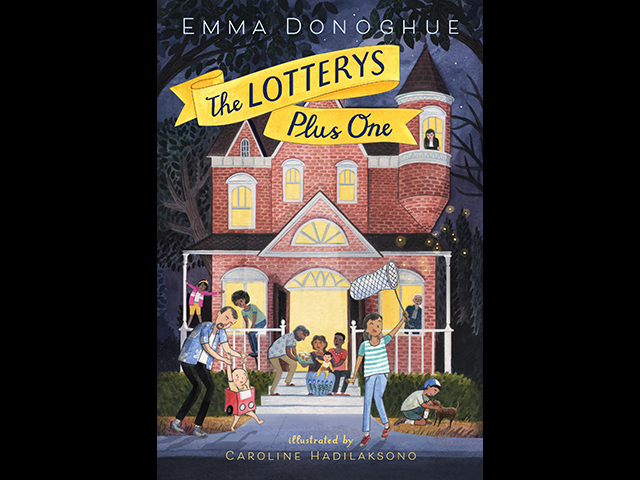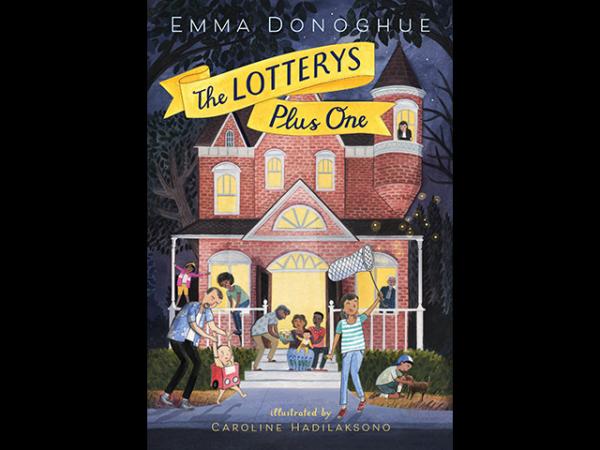The Lotterys Plus One


The cover of The Lotterys Plus One, a middle-grade novel about an unconventional family
What would you do if you won the lottery? In a new novel called The Lotterys Plus One (Scholastic, 2017), author Emma Donoghue writes about a fictional family that buys a secluded Victorian house with their winnings. They call the house Camelottery.
With four parents and seven homeschooled children, the Lotterys break many of the norms of a conventional family. They work to blend their talents together, while allowing each individual to pursue a range of interests.
The parents have funny nicknames: CardaMom, MaxiMum, PapaDum, and PopCorn. The kids, who are named after trees, are called Sic, Catalpa, Wood, Aspen, Sumac, Brian (she’s originally named Briar), and Oak.
The novel mainly follows the thoughts of nine-year-old Sumac, the calming one in the family. Donoghue, who is the mother of two children, believes that she herself is most like CardaMom because of “the hugs and loquacity and clumsiness.”
ENTER “GRUMPS”
After PopCorn’s father, nicknamed Grumps, accidently burns down his house, the family suspects that he has dementia and takes him in.
That’s when the trouble begins. Grumps hates everything about his new household and even criticizes whole grains and vegetables as “weird.” Sumac wonders when her family will be fun and exciting again.
Donoghue told me in an email that her own mother’s dementia partially inspired the character of Grumps. Donoghue’s passion for writing, however, started at an early age. When she was only seven, she was “suddenly struck by inspiration to write a poem.”
Donoghue has been writing ever since. She is known around the world for her award-winning novels for adults. The Lotterys Plus One is her first book for kids.
LEARNING THE IMPORTANCE OF FAMILY
Although Grumps and his negative attitude frustrate Sumac, she tries to make the best of things. Through the Lotterys’ love of adventure and excitement, they begin to understand the importance of family.
If you can’t wait to hear more about the Lotterys, don’t worry. Donoghue has already drafted a sequel. “Such a big family,” she told me, “needs more than one book to express themselves in.”
